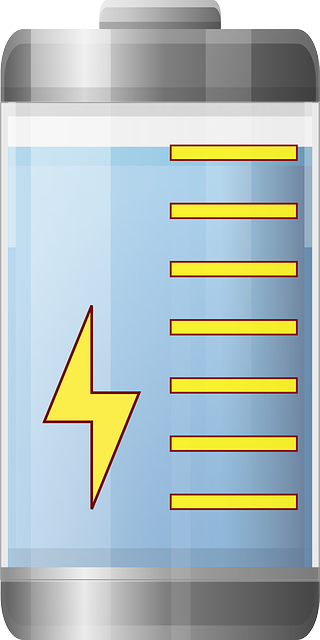Button batteries, commonly found in everyday items such as watches, hearing aids, and remote controls, are highly hazardous if ingested. These batteries can inflict severe chemical burns within minutes of contact with bodily fluids, potentially causing life-threatening injuries and long-term gastrointestinal complications. The corrosive nature of these batteries demands immediate medical intervention upon ingestion to prevent caustic damage to the esophagus, stomach, or intestines. Prompt recognition of symptoms like excessive salivation, refusal to eat or drink, and abdominal pain is crucial for early treatment, which significantly improves prognosis. Medical professionals will typically conduct diagnostic imaging and may perform an endoscopic procedure to retrieve the battery. It's essential to avoid inducing vomiting or consuming food or liquids post-ingestion and to seek immediate medical attention. Preventative measures include secure storage, child-resistant packaging, effective waste management, and educational campaigns to raise awareness about the risks associated with these batteries. A collaborative approach involving healthcare providers, Poison Control Centers, and community education efforts is vital in addressing button battery safety.
When a button battery is ingested, immediate action is critical due to the severe risks it poses. This article delineates the top three safety tips for managing such an incident, emphasizing understanding the hazards of button battery ingestion, recognizing symptoms promptly, and implementing effective preventative measures. It also outlines the necessary steps following ingestion, the importance of keeping these batteries secure, and the protocols for emergency contacts and medical care. By adhering to these guidelines, one can safeguard against the dangers associated with button battery ingestion and ensure proper care in the event of an accident.
- Understanding the Hazards of Button Battery Ingestion
- Immediate Steps to Take After a Button Battery Ingestion Incident
- Identifying the Symptoms and Signs of Button Battery Ingestion
- The Importance of Keeping Button Batteries Out of Reach of Children
- Emergency Protocols: Contacting Poison Control and Seeking Medical Attention
- Preventative Measures to Safeguard Against Accidental Ingestion
- Post-Incident Care and Long-Term Considerations
Understanding the Hazards of Button Battery Ingestion

Button batteries, often found in everyday devices such as watches, hearing aids, and remote controls, pose significant health risks if ingested. These small, round cells can cause severe chemical burns upon contact with bodily fluids, leading to serious damage within mere hours. The hazards of button battery ingestion are not limited to the immediate chemical injury; they also include potential long-term complications such as gastrointestinal blockage or perforation. The corrosive nature of these batteries can lead to caustic injuries in the esophagus, stomach, or intestines, causing tissue destruction and compromising vital functions. Recognizing the urgency of the situation is critical; if a button battery is suspected to have been ingested, prompt medical attention is essential. The longer a battery remains in the body, the greater the risk of injury, which can be life-altering or even fatal. Therefore, awareness of the risks associated with button batteries and swift response are paramount in preventing the severe consequences that can arise from their ingestion. It cannot be overstated: if there is any possibility that a button battery has been swallowed, immediate medical intervention is required to minimize harm and ensure the best possible outcome for the individual involved.
Immediate Steps to Take After a Button Battery Ingestion Incident

If a button battery has been ingested, immediate action is crucial to mitigate potential harm. The first step involves contacting emergency services or medical professionals right away. These experts are equipped to handle such situations and can provide guidance on the necessary course of action, which may include an endoscopic examination to locate and remove the battery if it has passed into the stomach. It is imperative not to induce vomiting or obstruct the throat with food or liquids, as these actions could lead to further injury.
The ingestion of a button battery can pose significant risks due to its capacity to generate an electrolyte-related caustic reaction within the body. This reaction can cause severe chemical burns in a very short period. Therefore, it is essential to avoid any attempts at self-remedy and to seek professional medical assistance immediately after such an ingestion. Prompt treatment can greatly increase the chances of a positive outcome, so time is of the essence when dealing with button battery ingestion incidents. Always prioritize quick response and expert care in these critical situations.
Identifying the Symptoms and Signs of Button Battery Ingestion

If a button battery is ingested, it’s imperative to recognize the symptoms promptly to prevent serious health complications. Button batteries can be found in various household items such as remote controls, hearing aids, and watches, making them commonly accessible to young children and even adults accidentally. The presence of a button battery in the digestive system can lead to chemical burns within hours due to the battery’s alkaline content reacting with bodily fluids. Common symptoms indicating button battery ingestion include salivation or drooling, refusal of food or drink, vomiting, irritability, lethargy, abdominal pain, and altered voice quality if the battery has lodged near the vocal cords. It’s crucial to note that these symptoms can manifest quickly; thus, immediate medical attention is essential once any of these signs are observed. A healthcare professional should assess the situation without delay to perform necessary diagnostic procedures, such as an X-ray, and provide appropriate treatment to minimize damage and ensure the safe passage of the battery through the digestive system. Early identification and intervention are key to preventing severe outcomes from button battery ingestion.
The Importance of Keeping Button Batteries Out of Reach of Children

Button batteries, small disc-shaped cells found in an array of household items such as remote controls, musical greeting cards, and hearing aids, pose a significant risk to young children. These batteries can cause severe chemical burns if ingested, leading to serious health complications. It is imperative to maintain a vigilant approach to the storage and disposal of button batteries to prevent accidental ingestion. Children often mistake these batteries for candy or playful objects due to their size and color; thus, it is crucial to keep them out of reach and in secure locations. Safety measures such as child-resistant packaging, proper waste disposal systems, and awareness campaigns are vital steps in mitigating the risks associated with button battery ingestion. By taking proactive steps to ensure these batteries are stored responsibly, we can significantly reduce the likelihood of such incidents occurring, safeguarding our children’s well-being. It is not just about adhering to safety protocols but also about fostering a culture of awareness and vigilance within households to protect our youngest family members from the dangers that button batteries can pose.
Emergency Protocols: Contacting Poison Control and Seeking Medical Attention

In the event of a child or an individual ingesting a button battery, immediate action is crucial to mitigate potential health risks. The first step in the emergency protocol is to promptly contact the national Poison Control Center. These centers are equipped with specialized knowledge and resources to guide you through the situation. They can provide critical advice on what measures to take without causing panic or unnecessary distress. It is imperative to have the exact type and size of the button battery ready when calling, as this information is vital for the poison control advisor to offer tailored guidance.
Following the consultation with Poison Control, seeking medical attention should be the next immediate step. A healthcare provider can perform a thorough assessment and possibly X-ray imaging to determine the battery’s location within the digestive tract. Medical professionals are trained to handle such cases and can take appropriate actions, which may include endoscopy to retrieve the battery if it has lodged in a critical area. Time is of the essence when dealing with button battery ingestion; promptly acting on these protocols increases the chances of a positive outcome and reduces the risk of serious complications such as chemical burns or perforation.
Preventative Measures to Safeguard Against Accidental Ingestion

To safeguard against the dangers of button battery ingestion, it is imperative to implement a series of preventative measures. Firstly, ensure that all household members are aware of the potential risks associated with these batteries. Keep button batteries out of reach of young children by storing them securely and in their original packaging, which typically includes safety warnings. Parents and caregivers should educate themselves on the identification of products containing button batteries and regularly inspect toys and electronic devices for loose batteries before they come into contact with children.
Secondly, consider installing child-resistant battery cases or using tamper-evident packaging when purchasing items that contain button batteries. It’s also wise to dispose of used button batteries immediately and properly, utilizing hazardous waste disposal services if available. If buttons batteries are accidently ingested, it is a medical emergency; seek professional healthcare immediately. Establishing clear guidelines and staying informed about the proper handling and disposal of button batteries can significantly reduce the risk of ingestion and mitigate the severe health consequences that may follow.
Post-Incident Care and Long-Term Considerations

In the event of a child or adult ingesting a button battery, immediate medical attention is critical. Post-ingestion care involves close monitoring by healthcare professionals who specialize in pediatric or emergency medicine. The first step is to avoid induced emesis or stomach pumping, as these can increase the risk of chemical burns. Instead, prompt imaging and subsequent endoscopic retrieval are the recommended procedures. It’s essential to maintain a calm environment and provide accurate information to the medical team regarding the type, size, and potential location of the ingested button battery to facilitate effective treatment.
Long-term considerations following an incident with button batteries include regular follow-up examinations to monitor for any delayed complications. These follow-ups are crucial because alkaline burns from button batteries can progress over time, potentially causing significant damage to the gastrointestinal tract or other organs. A multidisciplinary approach involving gastroenterologists, surgeons, and possibly other specialists is often necessary for the best outcomes. Additionally, awareness and education about the risks associated with button battery ingestion should be ongoing, as these small, powerful cells can be found in an increasing number of household items. Advocacy for better safety measures on product packaging and design, along with clear guidelines for safe disposal or storage, are important steps to minimize the risk of future incidents.
In conclusion, button battery ingestion poses significant health risks that necessitate immediate attention and preventative measures. Understanding the hazards associated with these batteries is crucial for prompt action should an incident occur. If a button battery is ingested, individuals must act swiftly by identifying symptoms, contacting poison control, and seeking medical care without delay. Preventative strategies, such as keeping batteries securely stored and out of children’s reach, are essential to minimize the risk of accidental ingestion. By adhering to these safety tips and protocols, one can better protect themselves or their loved ones from the potential dangers of button battery exposure. Vigilance and preparedness are key in ensuring a safe environment for all.



